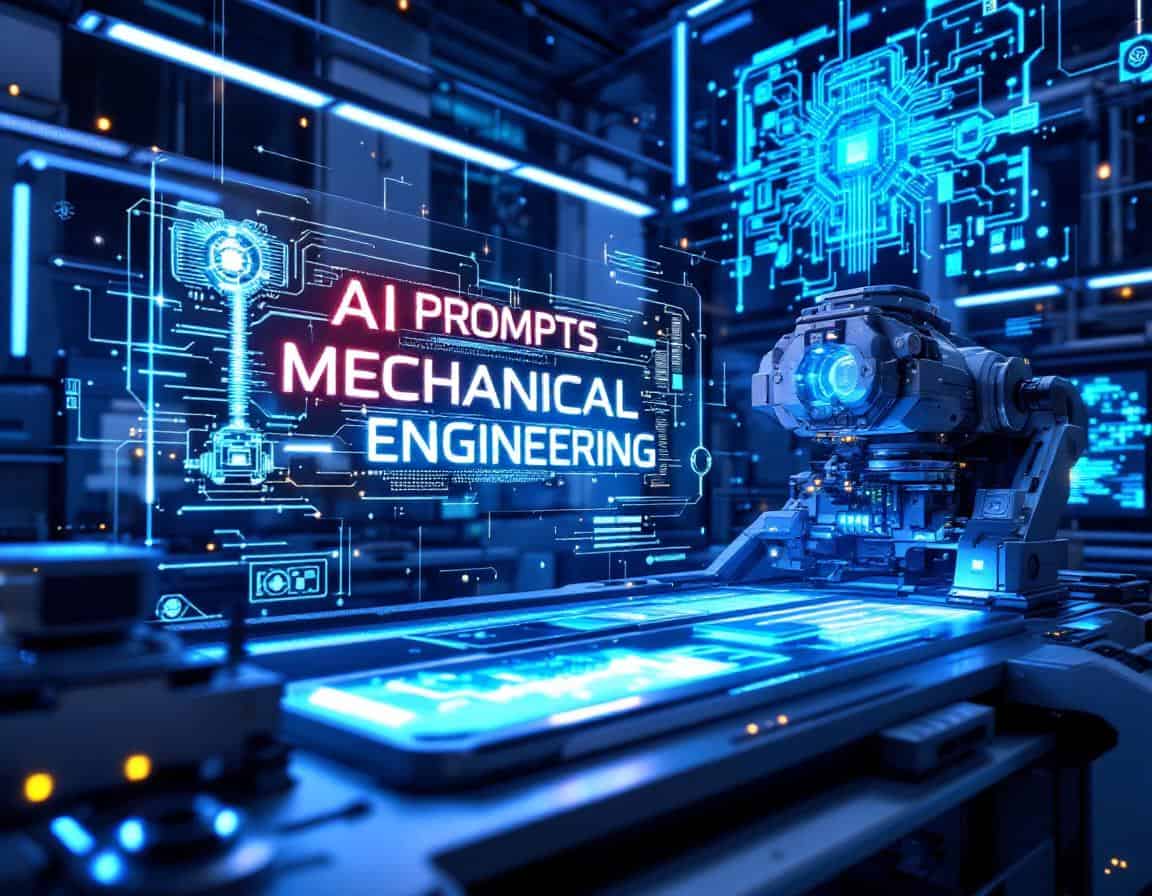
Les outils d'IA en ligne transforment rapidement l'ingénierie mécanique en augmentant les capacités humaines en matière de conception et d'analyse, fabricationet la maintenance. Ces systèmes d'IA peuvent traiter de grandes quantités de données, identifier des modèles complexes et générer des solutions nouvelles beaucoup plus rapidement que les méthodes traditionnelles. Par exemple, l'IA peut vous aider à optimiser les conceptions en termes de performance et de fabricabilité, à accélérer les simulations complexes, à prédire les propriétés des matériaux et à automatiser un large éventail de tâches analytiques.
Les invites fournies ci-dessous aideront par exemple à la conception générative, à l'accélération des simulations (FEA/CFD), à la maintenance prédictive où l'IA analyse les données des capteurs des machines pour prévoir les défaillances potentielles, ce qui permet un entretien proactif et minimise les temps d'arrêt, à la sélection des matériaux et à bien d'autres choses encore.
- Cette page est spécifique à un domaine. Si nécessaire, vous pouvez effectuer une recherche complète sur tous les domaines et tous les critères dans notre >. Répertoire d'invites AI <, dédié à conception de produits et innovation.
- Compte tenu des ressources et du temps disponibles sur le serveur, les invites elles-mêmes sont réservées aux membres enregistrés et ne sont pas visibles ci-dessous si vous n'êtes pas connecté. Vous pouvez vous inscrire, 100% gratuit :
Adhésion requise
Vous devez être membre du site pour accéder à ce contenu.



























Sommes-nous en train de supposer que l'IA peut toujours générer les meilleurs messages en génie mécanique ? Comment sont-elles générées ?
L'IA va-t-elle rendre les ingénieurs humains superflus ?
Articles Similaires
Évaluation ergonomique du poste de travail
Ordre de modification technique (ECO) : meilleures pratiques pour minimiser les perturbations et les coûts
Du laboratoire au marché : le rôle de la production pilote
Plus de 45 astuces de sciences cognitives pour les jeux et le marketing : psychologiques et d'engagement
Plus de 45 astuces de sciences cognitives pour les jeux et le marketing : psychologiques et d'engagement
Dernières publications et brevets sur les zéolites